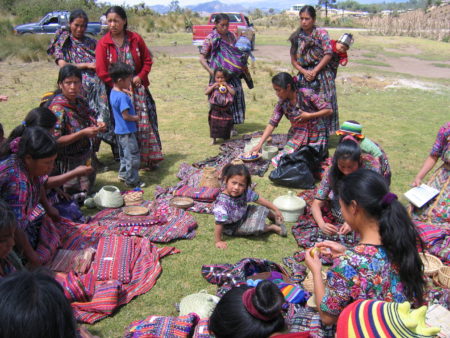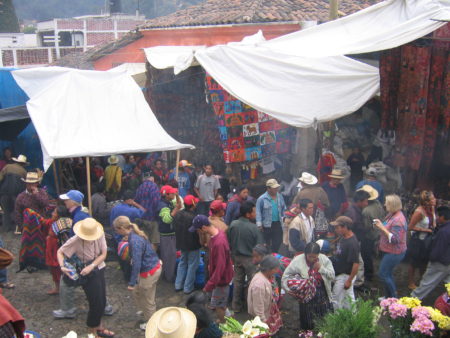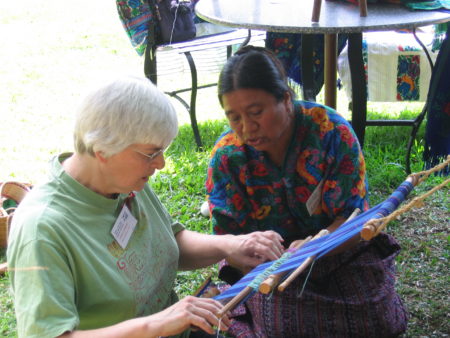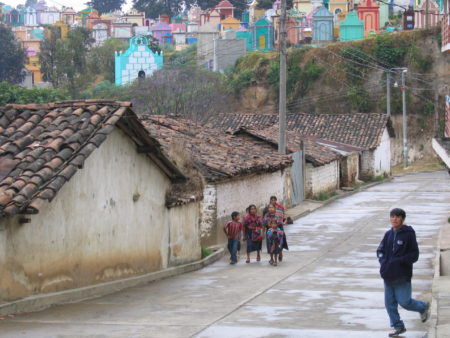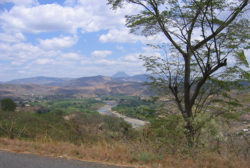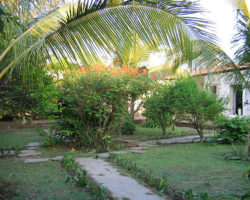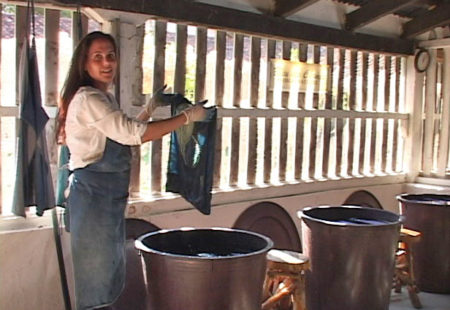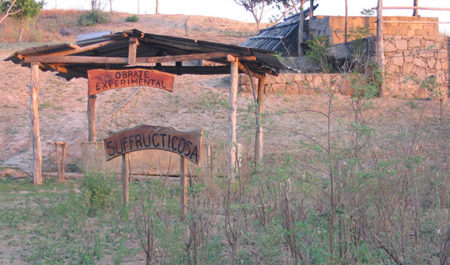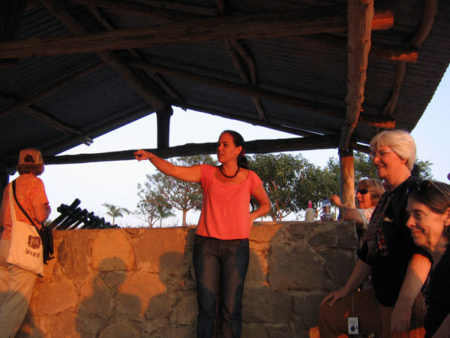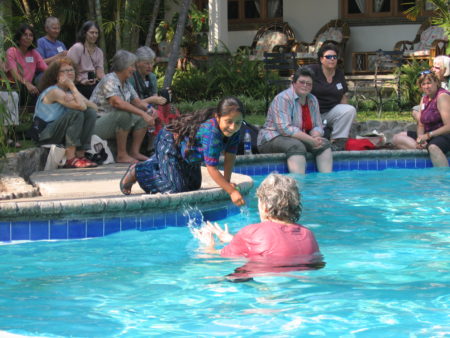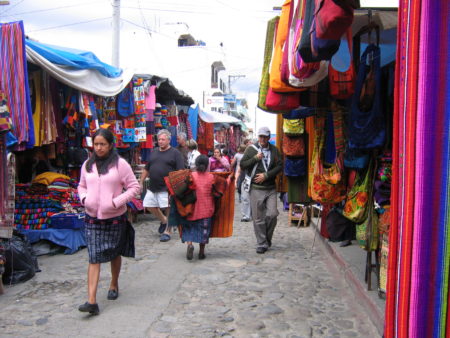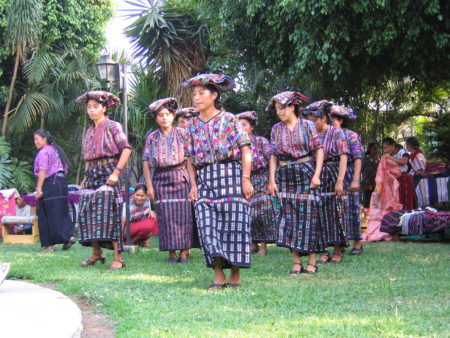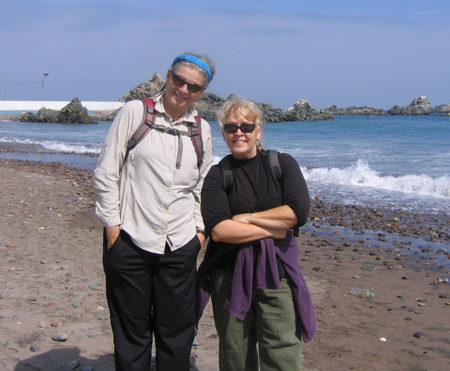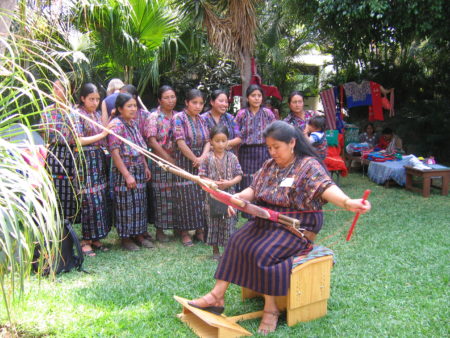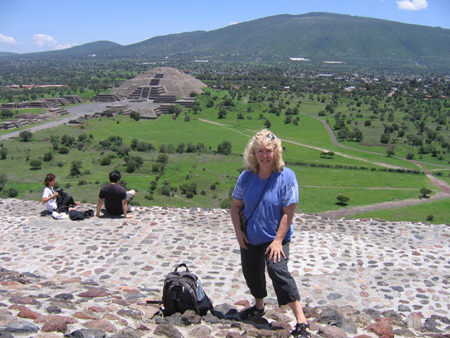Do you ever wonder why we textile folks love to travel the world in search of the chance to meet other textile makers and lovers? What can be accomplished by passing on the techniques of creating cloth and sharing stories with new artisans we meet? Travel offers a bridge to understanding culture through textiles and their place in our lives.
Much of my travel has focused on the cultural study of textiles, both ancient artifacts and contemporary cloth. One such trip to El Salvador stands out because I discovered the many layers of meaning that cloth can bring to a place where history, politics, and people are enveloped in the blue of indigo.
In 2007, after a long journey from Guatemala to El Salvador, members of Weave A Real Peace arrived at Hacienda San Juan Buena Vista and heard Grace Guirola’s personal story, one that spans generations and seemed destined for a bright blue future. Grace’s great grandparents produced and processed indigo in the distant past, but her family fled to the safety of the United States during the civil war in El Salvador, the land taken by cooperatives during the agrarian reform. Years later she was able to buy some of her family’s land from the cooperative, return to her beloved landscape and begin a long journey of restoring her ancestral home and building a life based on indigo and cloth.
We walked the ground where Grace had planted two varieties of indigo, shared stories over a meal and delightfully dyed yarn in her indigo vats after dark. It was a memorable experience that resulted in a small treasure trove of dyed items to carry home. But the indigo had penetrated more than cloth, it had created a memory to carry, one more woven story in my mind.
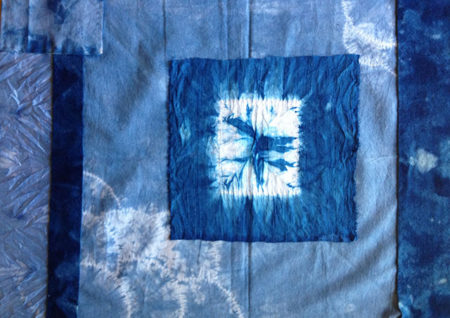
I have been fortunate to travel many places around the world and these international experiences have completely reshaped the way I think about our global environment. The exhilarating experience of being thrown into the unpredictable miasma of a world market—be it the plaka, the souk, or the plaza—will change a person. And everywhere in these world markets there are textiles, dye plants, and the stories and memories of women.
The textiles in our lives are so much more than beautiful objects, they contain the stories of our lives and the world. You are stitching a part of WARP’s story and each story reflects country, culture, ideas, ideals. Cloth, in all its various forms, is a powerful agent of change in many regions of our world – cloth can be transformative and reach across the widest gap.
So, what can we do? First, how about being a Textile Ambassador? Check into ClothRoads and sign up for their email list and you will be able to download a wonderful pdf on how to be a Traveling Textile Ambassador. Next, pack your bags and get ready to travel to Mexico and meet people who love cloth as much as you do. Let’s go find new friends and create new woven stories to share.
Get out – travel – join us – share your story on FB and Google Groups; together we can Weave A Real Peace
Good Reads and Resources for Oaxaca travelers…
Textile Fiestas of Mexico: A Traveler’s Guide to Celebrations, Markets and Smart Shopping, 2016, Sheri Brautigam. Fabulous book and just what you need for Oaxaca. Available at ClothRoads and ThrumsBooks.
Zapotec Weavers of Teotitlan, 1999, Andra Stanton. The culture, legacy and techniques of Zapotec weaving.
The Unbroken Thread: Conserving the Textile Traditions of Oaxaca, 1997, Kathryn Klein, ed. Conserving the textile collection at the Regional Museum of Oaxaca.
Artisans and Advocacy in the Global Market:Walking the Heart Path, 2015, Simonelli, O’Donnell and Nash, eds. The latest on working with artisan groups, including our own Christine Eber’s work in Chiapas. She will be bringing two women to the meeting in Oaxaca.
A Textile Guide to the Highlands of Chiapas, 2011, Walter Morris Jr., if you are going into Chiapas!
Maya Threads: A Woven History of Chiapas, 2015, Morris Jr. and Karasik, a history of the cultural textiles of the Maya of the Chiapas area.

